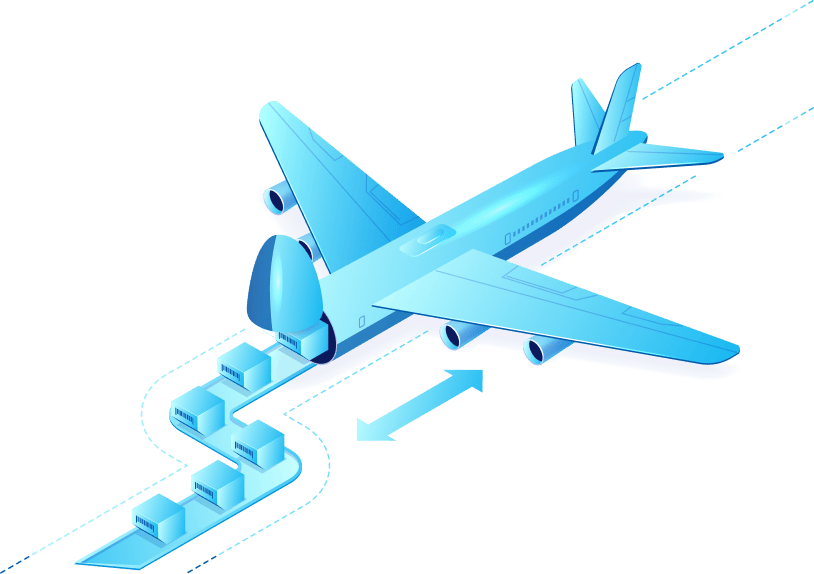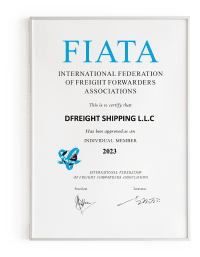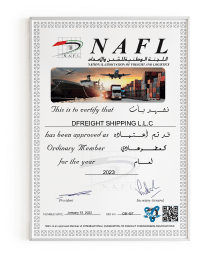Air Freight to Ireland
Air Freight to Ireland
Fast, Reliable, and Efficient Air Freight to/from Ireland
DFreight Air Freight Service is your top choice for swift and dependable air cargo shipping to/from Ireland. For a variety of commodities, including perishable goods, healthcare supplies, electronics, machinery, or anything that demands fast delivery from Ireland to the UAE and vice versa, we’ve got you covered. With years of expertise, comprehensive solutions, a commitment to on-time delivery, cutting-edge technology, top-notch security, competitive pricing, and a global reach, we’re here to make your airfreight experience seamless and worry-free. Trust DFreight for excellence in air shipping and submit your inquiry right away to receive the best competitive prices for your air cargo to/from Ireland.

Ireland Exports and
Imports
The top exports of Ireland are Vaccines, blood, antisera, toxins and cultures, Packaged Medicaments, Nitrogen Heterocyclic Compounds, Integrated Circuits, and Scented Mixtures, exporting mostly to United States, Germany, United Kingdom, Belgium, and China.
The top imports of Ireland are Planes, Helicopters, and/or Spacecraft, Packaged Medicaments, Vaccines, blood, antisera, toxins and cultures, Computers, and Nitrogen Heterocyclic Compounds, importing mostly from United Kingdom, United States, Germany, Netherlands, and China.
Market Update
According to the Trading Economics database, UAE imports from Ireland were $750.15 million and UAE exports to Ireland were $94.04 million in 2021.
The market update between Ireland and the UAE for 2023 is generally favorable. The market update reflects how the two nations have been enhancing their trade and investment connections. The UAE is one of the top foreign investors in Ireland, and the Irish government is making a lot of effort to increase this flow of capital. The market update demonstrates that the two nations are collaborating to forge a more affluent future.
Banned Products
There are a number of products that are banned from being imported into Ireland. These include:
- Certain types of weapons and ammunition
- Narcotics and illegal drugs
- Endangered animal and plant species
- Counterfeit goods
- Hazardous materials
- Pornographic materials
Violating any of these bans can result in serious penalties, including imprisonment.


Documents & Customs Clearance
Some of the documents that may be required when importing into Ireland include:
1. A commercial invoice
2. A bill of lading
3. A certificate of origin
4. An import license
5. An insurance policy
In addition to the above documents, the importer will also need to complete various customs declarations and may be required to pay import duties and taxes.
Shipping Different Commodities from/to Ireland
How to Ship Fresh Avocado Worldwide From the UAE – A Perfect 2023 Guide
Shipping Valuable Items in UAE: A Step-by-Step Guide
How to Ship Toys From China
Major Air Cargo Port
-
Italy
Germany
United Kingdom
Netherlands
France
Turkey
Spain
Denmark
Switzerland
Czech Republic
Hungary
Poland
Romania
Greece
Portugal
Slovakia
Sweden
Ireland
-
China
India
Taiwan
Hong Kong
Japan
Singapore
South Korea
Malaysia
Qatar
Indonesia
Saudi Arabia
Thailand
Bangladesh
Lebanon
Kuwait
-
Uganda
Congo
Egypt
Rwanda
Kenya
South Africa
Morocco
Algeria
-
-
-


We consolidate cargo from Germany, Belgium, France, Luxembourg, and nearby cities to Amsterdam, then ship it directly to Dubai.
Certificates & Memberships




- Stress-Free Documentation We simplify the paperwork process, making it easy for you to focus on what matters most – your shipment.
- Clear Cost Breakdown Our pricing is straightforward, with a detailed breakdown so you can see exactly where your money goes.
- Dedicated Support We’re just a click away. Your dedicated support team is there to address any questions or concerns promptly.
- Live Shipment Tracking Easily follow your ocean and air freight shipments 24/7 with real-time tracking. No more unexpected delays.
Ship Your Cargo with Ease
Get Started Today!
Why Choose Consolidated Air Freight?
Guaranteed Space
Secure your cargo space without worries.
Reliable Scheduling
Count on our reliable predictive schedules
Nationwide Collections
We pick up your cargo throughout Benelux and Germany
Regional Trucking
Benefit from local trucking within Europe and GCC
Competitive Pricing
Enjoy market-competitive air freight rates
Fast Delivery
Rapid and secure shipping for time-sensitive items
Regional Trucking
Benefit from local trucking within Europe and GCC
Competitive Pricing
Enjoy market-competitive air freight rates
Fast Delivery
Rapid and secure shipping for time-sensitive items
Guaranteed Space
Secure your cargo space without worries.
Reliable Scheduling
Count on our reliable predictive schedules
Nationwide Collections
We pick up your cargo throughout Benelux and Germany
Any Questions?
Reach out to us, and our experts will work with you to discover the tailored solution you need.





 Germany
Germany Netherlands
Netherlands Luxemburg
Luxemburg Belgium
Belgium





